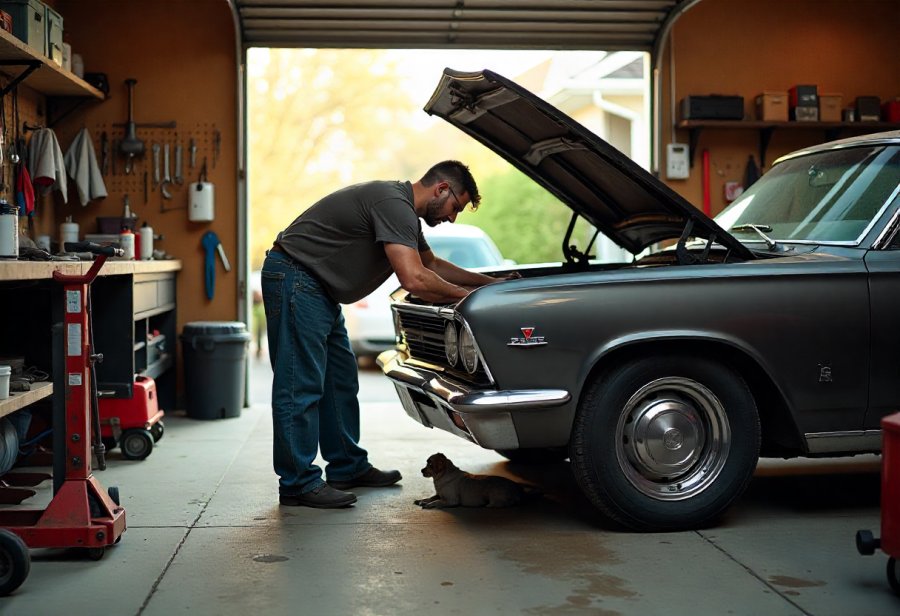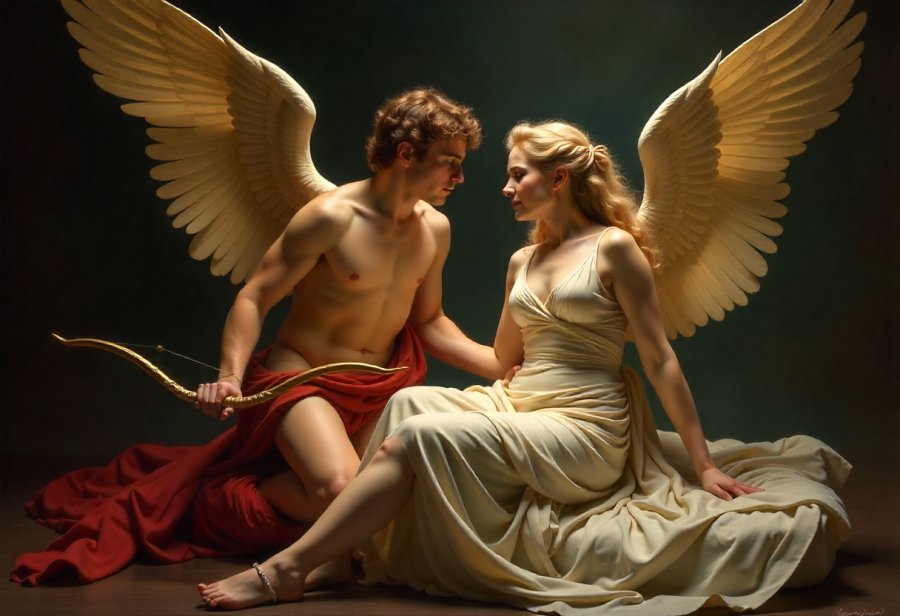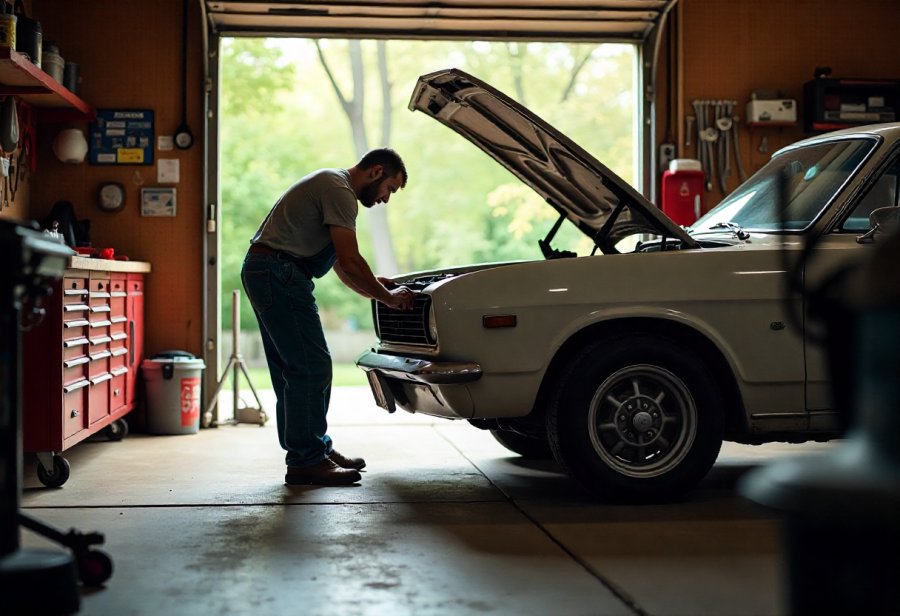Leonardo da Vinci is celebrated not only for his masterpieces but also for his boundless curiosity across art, science, engineering, and anatomy. His relentless quest to understand the universe fueled innovations that blurred the lines between disciplines—balancing meticulous observation with inventive experimentation. His notebooks reveal a mind driven by hands-on inquiry, challenging established beliefs and pioneering concepts like flight, water management, and early robotics centuries ahead of their time. But what if his hidden insights still hold keys to our future? Today’s innovators draw inspiration from his holistic approach, applying his principles to modern challenges like sustainable energy and artificial intelligence. Leonardo’s life exemplifies how questioning assumptions, embracing failure, and exploring across fields can unlock breakthroughs—and it prompts us to ask: what secrets are waiting within his mind, and how might they transform our world? His legacy challenges us to keep curiosity alive and push beyond the known.
Unlocking the Genius of Leonardo da Vinci: A Renaissance Multidisciplinary Mastermind
Leonardo da Vinci’s name immediately evokes images of the Mona Lisa’s mysterious smile and the intricate details of The Last Supper. But his influence extends far beyond his artistry. He was a true Renaissance polymath—an artist, scientist, engineer, anatomist, and inventor—whose curiosity knew no bounds. His talents spanned disciplines that today seem worlds apart, yet for Leonardo, they were interconnected threads woven into a single quest to understand the world. This integrated approach set him apart from his contemporaries and laid the groundwork for many modern innovations.
Born in Vinci, Italy, in 1452, Leonardo’s early years were marked by an innate curiosity that seemed to transcend the norms of his time. Without formal university training, he relied heavily on self-education, exploring everything from water flow and flight to human anatomy and mechanical devices. His childhood fascination with nature—watching animals, studying plants, observing the sky—evolved into an insatiable desire to decode the mysteries of life and the universe. This relentless questioning became the hallmark of his lifelong pursuit of knowledge.
What truly distinguished Leonardo was his ability to connect ideas across different fields. He didn’t see science and art as isolated pursuits but as complementary tools for discovery. His paintings, celebrated for their realism and depth, incorporated scientific insights into optics and anatomy, elevating portraiture to a new level. Conversely, his scientific sketches—ranging from flying machines to detailed anatomical diagrams—demonstrated artistic mastery that brought scientific concepts vividly to life. This cross-disciplinary thinking allowed him to innovate in ways that others couldn’t, often blurring the lines between art and science to forge new paths.
Leonardo’s notebooks serve as a testament to his restless mind. Filled with sketches, observations, and hypotheses, they reveal a relentless curiosity—an ongoing quest to understand everything from the mechanics of water to the inner workings of the human body. His experiments, whether dissecting cadavers or designing early flying devices, weren’t mere curiosities but serious inquiries rooted in observation and hands-on exploration. His meticulous documentation set a standard for inquiry that continues to influence scientific practice today, emphasizing the importance of curiosity-driven discovery and continuous questioning.
Beyond his technical achievements, Leonardo’s significance lies in his holistic view of knowledge. He saw the natural world as an interconnected system, where art, science, and engineering complemented each other. His ability to see the connections between disparate disciplines fostered innovations that felt revolutionary—concepts like flight or water management that still inspire modern technology. His approach reminds us that breaking down barriers between fields can unlock new possibilities and deepen our understanding of the world.
Leonardo da Vinci’s legacy is a testament to the power of curiosity and the importance of a multidisciplinary mindset. He exemplified how relentless questioning, combined with artistic and scientific skill, can lead to breakthroughs that stand the test of time. His life encourages us to look beyond traditional boundaries, to seek understanding across all domains of knowledge, and to pursue our own passions with the same fearless curiosity. In doing so, we can continue to unlock the secrets he left behind—and perhaps discover new ones of our own.
The Scientific Spirit of Leonardo: Empirical Inquiry and Ingenious Inventions
Leonardo da Vinci’s scientific approach was driven by an insatiable curiosity and an active, hands-on attitude that set him apart from many of his contemporaries. Unlike scholars who relied heavily on accepted teachings or dogma, Leonardo questioned everything, seeking to understand the natural world through direct observation and experimentation. His notebooks are filled with detailed sketches, notes, and hypotheses—covering everything from water flow and aerodynamics to human anatomy. This empirical method, emphasizing evidence over assumption, was revolutionary during the Renaissance, a time when many relied on ancient texts and unchallenged authority.
What made Leonardo’s scientific inquiries truly remarkable was his relentless drive to test ideas himself. He dissected human corpses to study anatomy, meticulously mapping muscles, bones, and organs with an accuracy that was unprecedented. He believed genuine understanding could only come from firsthand experience, and this philosophy guided his investigations into flight, water movement, and mechanical devices. Instead of accepting existing knowledge, he experimented with models, sketches, and dissections to gather data and insights, often challenging the prevailing beliefs of his era. His approach was rooted in discovery—questioning assumptions and seeking tangible evidence at every turn.
Leonardo’s sketches reveal a mind deeply engaged with invention and mechanics. His designs for flying machines, like the ornithopter and early helicopter prototypes, were more than ideas—they were systematic explorations of how lift and propulsion could work. His studies of water—its flow, resistance, and potential for power—demonstrated a keen understanding of hydraulics that would influence future engineering. These experiments weren’t just fanciful sketches; they were deliberate efforts to understand and imitate nature’s principles, blending artistic intuition with scientific rigor. This approach allowed him to see the mechanics behind natural phenomena, laying important groundwork for future technological advances.
In addition to flight and hydraulics, Leonardo’s curiosity extended to inventing devices that prefigured modern technology. His sketches include a robotic knight capable of sitting, waving, and moving its jaw—an early precursor to robotics. He envisioned armored vehicles with circular rotating designs that resemble tanks, centuries ahead of their time. His ideas for hydraulic pumps, musical instruments, and diving suits further illustrate a mind eager to explore all possibilities. These inventions weren’t mere fantasies; they were grounded in mechanical principles and careful experimentation, demonstrating a sophisticated understanding of how to bring ideas to life through observation and hands-on work.
Leonardo’s seamless integration of art and science was a defining feature of his method. His anatomical sketches weren’t merely artistic studies—they represented scientific investigations into the human body’s inner workings. His mastery of perspective and optics in painting reflected a deep understanding of light and human vision. This interdisciplinary approach led to innovations that felt revolutionary—concepts like flight or water management that still inspire modern technology today. His ability to connect different fields fostered breakthroughs that blurred boundaries, showing that progress often arises at the intersection of disciplines. His meticulous documentation and persistent questioning continue to serve as a blueprint for scientific inquiry, encouraging a mindset of relentless curiosity and exploration.
Endless Curiosity: How Leonardo’s Legacy Continues to Drive Human Innovation
Leonardo da Vinci’s relentless curiosity continues to serve as a powerful source of inspiration for human progress today. His life exemplifies how a simple desire to understand the world more deeply and challenge what is already known can spark innovations that reshape entire fields. Modern scientists, engineers, and thinkers often draw from Leonardo’s approach, pushing the boundaries of aerospace, medicine, artificial intelligence, and beyond. His mindset encourages us to question assumptions, seek new connections, and pursue ideas that initially seem far-fetched, reminding us that breakthroughs often start with a bold question and a willingness to explore.
Many of Leonardo’s sketches and ideas still ignite fresh waves of innovation. His early concepts of flying machines, for instance, continue to inspire drone technology and personal flight devices. Today’s aerospace engineers build on those centuries-old visions, demonstrating how curiosity-driven exploration can transcend time. Similarly, his water management inventions hint at future solutions for sustainable energy and efficient irrigation—blueprints that remain relevant in addressing today’s pressing environmental challenges. These sketches are more than relics of a genius—they’re keys to unlocking tomorrow’s breakthroughs, waiting for new generations to realize their potential.
His approach to curiosity also offers a blueprint for addressing complex global problems. Climate change, health crises, and rapid technological shifts require fresh perspectives and cross-disciplinary solutions. Leonardo’s ability to see the interconnectedness of art, science, engineering, and biology shows that breakthroughs often happen at their intersection. By adopting this mindset, modern innovators can craft holistic strategies that tackle multiple challenges simultaneously. His life reminds us that progress doesn’t come from isolated efforts but from a willingness to explore diverse fields and forge new links between ideas, creating a richer, more integrated approach to solving the world’s biggest issues.
Leonardo’s meticulous notebooks, filled with sketches, experiments, and hypotheses, highlight the importance of persistence and detailed reflection. Today’s scientists and inventors can learn from his habit of recording ideas, revisiting concepts, and refining their work over time. His method shows that failure isn’t the end but a vital part of discovery—every setback is a step toward understanding. Staying curious means embracing these moments, viewing them as opportunities to learn and improve. Leonardo’s scientific spirit—focused on relentless inquiry and hands-on experimentation—remains a model for the modern pursuit of knowledge, encouraging us to keep pushing boundaries and questioning assumptions.
Looking ahead, the potential for new ideas inspired by Leonardo’s work remains vast. His sketches and theories are a treasure trove for future explorers willing to challenge conventions and venture into uncharted territory. As technology advances, many of his once-fantastical inventions could become everyday realities—autonomous robots, sustainable energy systems, advanced medical devices. The key lies in maintaining a sense of wonder, openness, and curiosity—recognizing that innovation often begins with asking “what if?” Leonardo’s legacy urges us to keep questioning, keep exploring, and unlock the secrets of our own imagination. The more we explore, the closer we get to turning his visions into reality.
His life also serves as a reminder that the pursuit of knowledge is a continuous journey. Every discovery opens new questions, and each breakthrough paves the way for even greater understanding. Leonardo’s ability to see the world as an interconnected whole inspires us to look beyond narrow specialties and embrace a holistic view. This approach fosters creativity, fuels innovation, and encourages collaboration across disciplines. In a time when specialization can sometimes limit thinking, Leonardo’s example shows the value of a broad, curious mind—one that refuses to accept boundaries and instead seeks to weave together diverse insights into a richer understanding.
In the end, Leonardo da Vinci’s legacy is a testament to the transformative power of curiosity. His example teaches us that progress stems from a mindset that refuses to accept the status quo and is eager to explore beyond the known. By embracing this spirit, we can develop solutions that improve lives, push the boundaries of what’s possible, and continue the evolution of human civilization. His life encourages us to ask the fundamental question: what’s possible if we look beyond what’s already understood? As we stand on the brink of new frontiers, Leonardo’s example urges us to stay curious, keep questioning, and pursue the endless potential of human ingenuity.
This ongoing pursuit of knowledge underscores the importance of nurturing curiosity in all areas of innovation. By following Leonardo’s example, many are turning to resources like Leonardo da Vinci’s legacy to inspire their work and push the boundaries of what is possible. Embracing this spirit ensures that the torch of discovery continues to burn brightly for generations to come.








